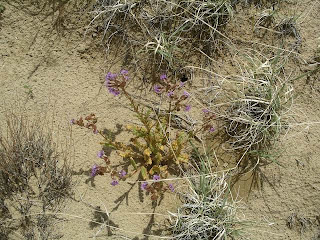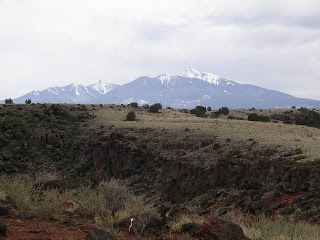





























So, I've a few people ask me just what a respiratory therapist was or what they did... so here's your answer - according to the Bureau of Labor Statistics.
Now RT's need to have at least an associate's degree, although you can get a BS in respiratory therapy and you must be certified and/or registered. The program I am currently enrolled in should allow me to sit for the RRT (registered RT) exam. You can also specialize in certain fields - neonatology, acute care, diagnostics, home care, etc... each speciality comes with its own requirements and certifications. I haven't even begun to think about specializing yet, although there are a few women in my class that want to go into neonatal-pediatrics care.
PER BLS:
Respiratory therapists and respiratory therapy technicians—also known as respiratory care practitioners—evaluate, treat, and care for patients with breathing or other cardiopulmonary disorders. Practicing under the direction of a physician, respiratory therapists assume primary responsibility for all respiratory care therapeutic treatments and diagnostic procedures, including the supervision of respiratory therapy technicians. Respiratory therapy technicians follow specific, well-defined respiratory care procedures under the direction of respiratory therapists and physicians.
In clinical practice, many of the daily duties of therapists and technicians overlap. However, therapists generally have greater responsibility than technicians. For example, respiratory therapists consult with physicians and other health care staff to help develop and modify patient care plans. Respiratory therapists also are more likely to provide complex therapy requiring considerable independent judgment, such as caring for patients on life support in intensive-care units of hospitals. In this Handbook statement, the term respiratory therapist includes both respiratory therapists and respiratory therapy technicians.
Respiratory therapists evaluate and treat all types of patients, ranging from premature infants whose lungs are not fully developed to elderly people whose lungs are diseased. Respiratory therapists provide temporary relief to patients with chronic asthma or emphysema, and they give emergency care to patients who are victims of a heart attack, stroke, drowning, or shock.
To evaluate patients, respiratory therapists interview them, perform limited physical examinations, and conduct diagnostic tests. For example, respiratory therapists test a patient’s breathing capacity and determine the concentration of oxygen and other gases in a patient’s blood. They also measure a patient’s pH, which indicates the acidity or alkalinity of the blood. To evaluate a patient’s lung capacity, respiratory therapists have the patient breathe into an instrument that measures the volume and flow of oxygen during inhalation and exhalation. By comparing the reading with the norm for the patient’s age, height, weight, and sex, respiratory therapists can provide information that helps determine whether the patient has any lung deficiencies. To analyze oxygen, carbon dioxide, and blood pH levels, therapists draw an arterial blood sample, place it in a blood gas analyzer, and relay the results to a physician, who then makes treatment decisions.
To treat patients, respiratory therapists use oxygen or oxygen mixtures, chest physiotherapy, and aerosol medications—liquid medications suspended in a gas that forms a mist which is inhaled. They teach patients how to inhale the aerosol properly to ensure its effectiveness. When a patient has difficulty getting enough oxygen into his or her blood, therapists increase the patient’s concentration of oxygen by placing an oxygen mask or nasal cannula on the patient and setting the oxygen flow at the level prescribed by a physician. Therapists also connect patients who cannot breathe on their own to ventilators that deliver pressurized oxygen into the lungs. The therapists insert a tube into the patient’s trachea, or windpipe; connect the tube to the ventilator; and set the rate, volume, and oxygen concentration of the oxygen mixture entering the patient’s lungs.
Therapists perform regular assessments of patients and equipment. If a patient appears to be having difficulty breathing or if the oxygen, carbon dioxide, or pH level of the blood is abnormal, therapists change the ventilator setting according to the doctor’s orders or check the equipment for mechanical problems.
Respiratory therapists perform chest physiotherapy on patients to remove mucus from their lungs and make it easier for them to breathe. Therapists place patients in positions that help drain mucus, and then vibrate the patients’ rib cages, often by tapping on the chest, and tell the patients to cough. Chest physiotherapy may be needed after surgery, for example, because anesthesia depresses respiration. As a result, physiotherapy may be prescribed to help get the patient’s lungs back to normal and to prevent congestion. Chest physiotherapy also helps patients suffering from lung diseases, such as cystic fibrosis, that cause mucus to collect in the lungs.
Therapists who work in home care teach patients and their families to use ventilators and other life-support systems. In addition, these therapists visit patients in their homes to inspect and clean equipment, evaluate the home environment, and ensure that patients have sufficient knowledge of their diseases and the proper use of their medications and equipment. Therapists also make emergency visits if equipment problems arise.
In some hospitals, therapists perform tasks that fall outside their traditional role. Therapists are becoming involved in areas such as pulmonary rehabilitation, smoking cessation counseling, disease prevention, case management, and polysomnography—the diagnosis of breathing disorders during sleep, such as apnea. Respiratory therapists also increasingly treat critical care patients, either as part of surface and air transport teams or as part of rapid-response teams in hospitals.




 Wupatki is really an amazing site to behold. It is built utilizing an existing boulder as part of the structure of the pueblo. At this pueblo, there as been some reconstruction, but some they removed to make it more true to how they found it. The ball-court and ceremonial ring have both been reconstructed.
Wupatki is really an amazing site to behold. It is built utilizing an existing boulder as part of the structure of the pueblo. At this pueblo, there as been some reconstruction, but some they removed to make it more true to how they found it. The ball-court and ceremonial ring have both been reconstructed.